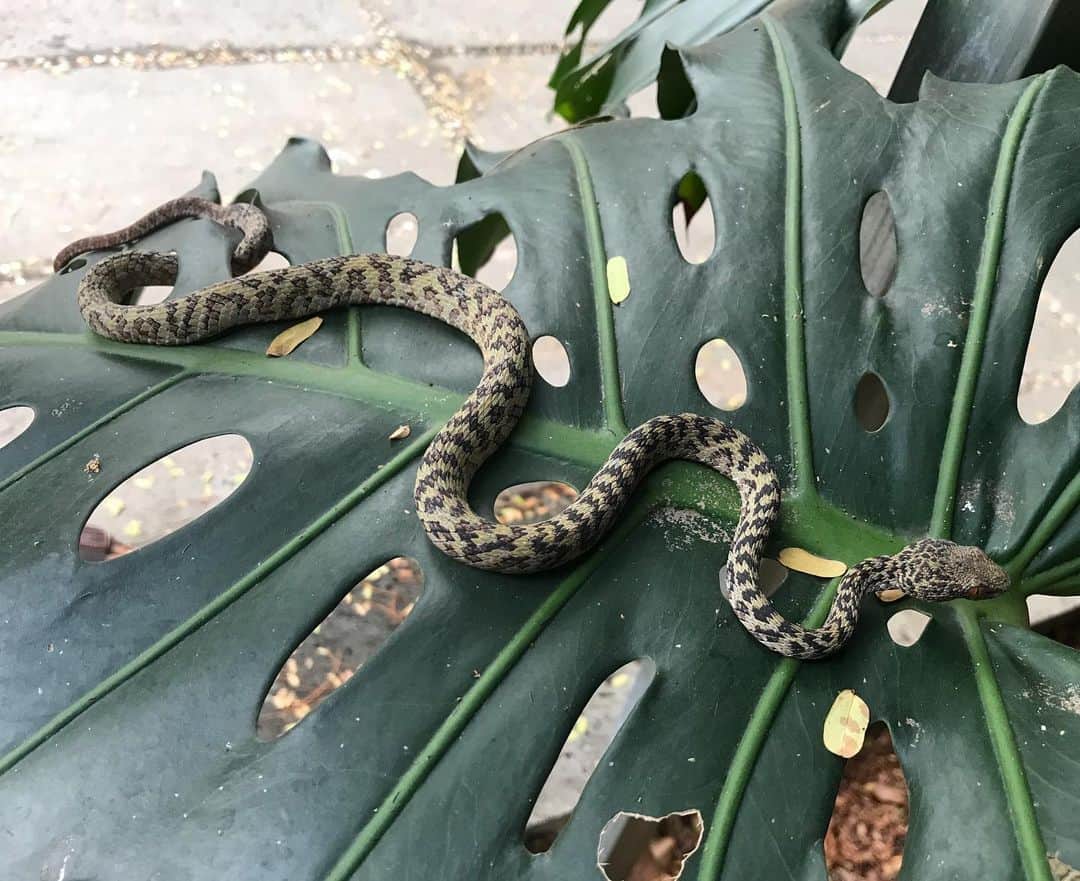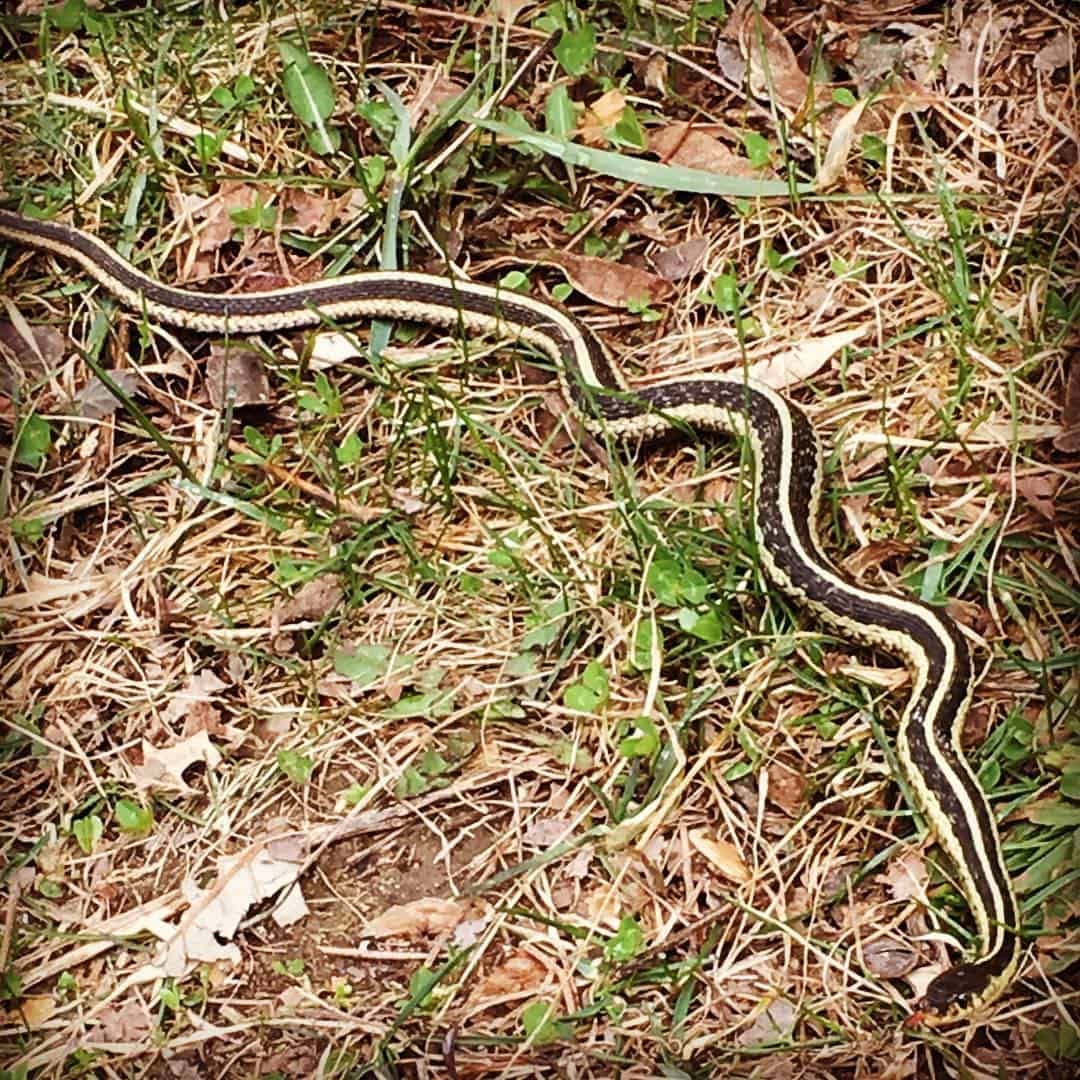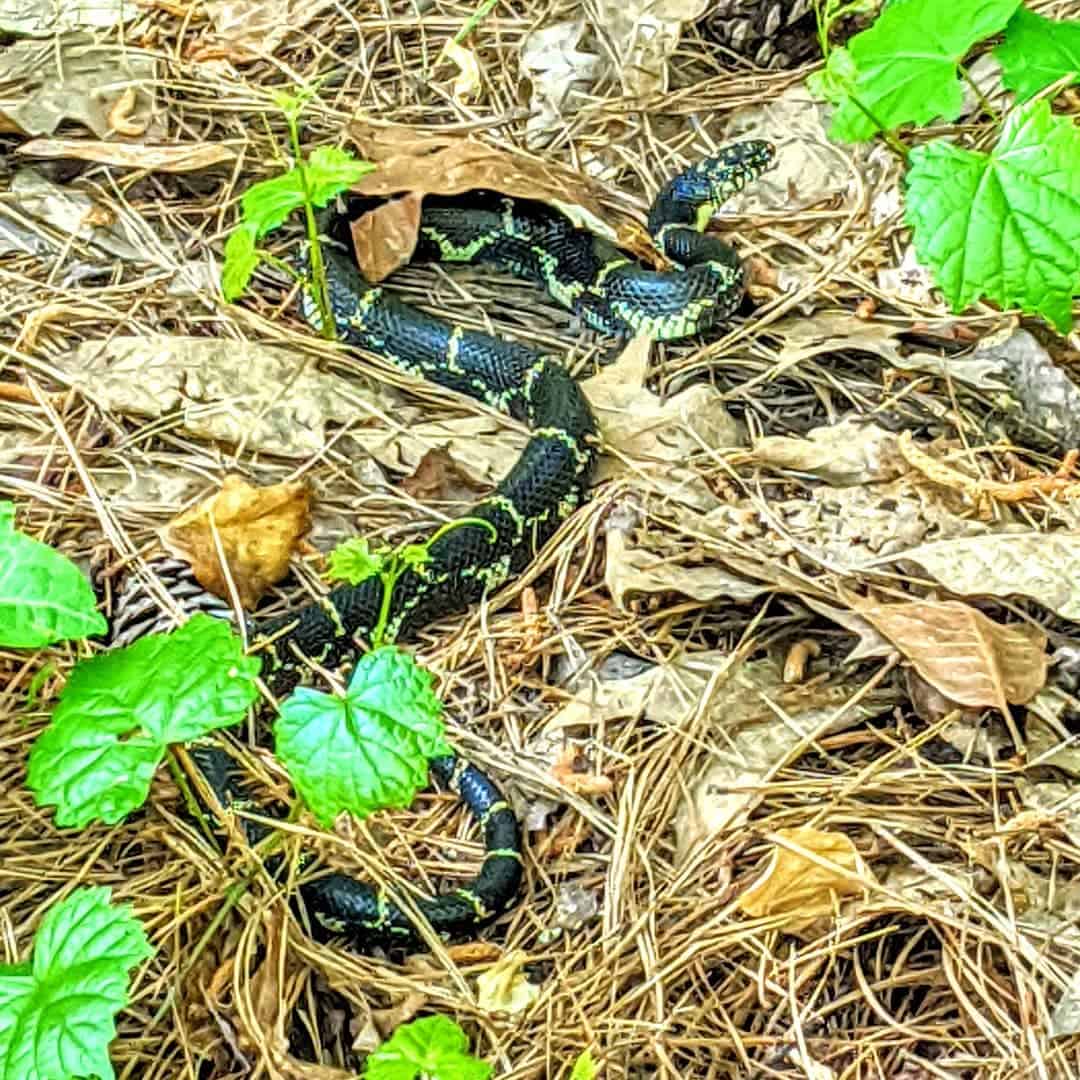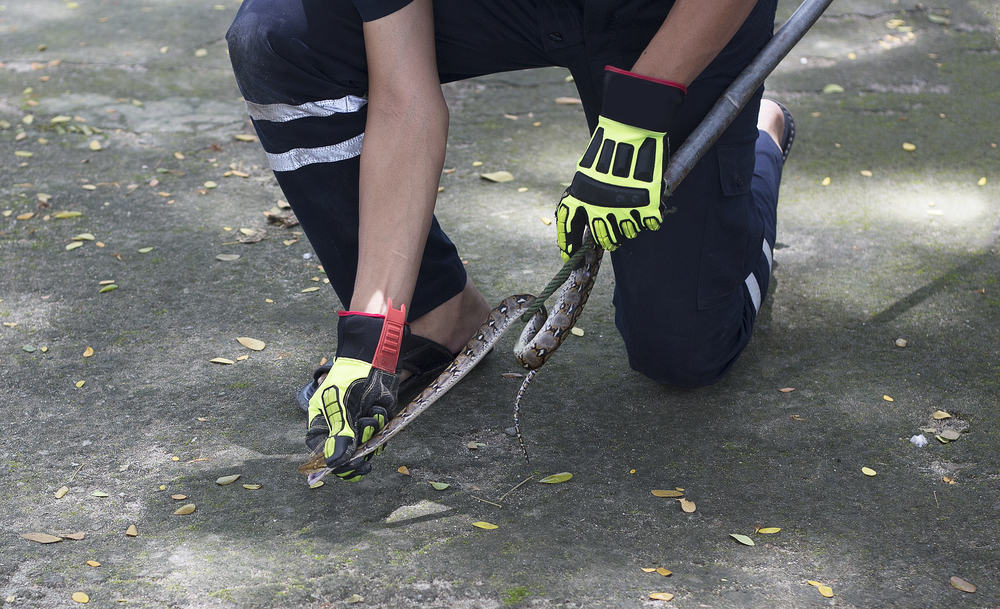Northern Black Racers, Eastern Indigo snakes, Southern Copperheads– whatever type of snake you’ve seen slithering around your backyard, it can be a bit scary to try and catch it, but we are here to change that.
Of course, safety should always be your number one priority when dealing with snakes. However, if you arm yourself with the right knowledge and tools, you can easily capture any snake without worrying about getting hurt.
This guide will provide the safest materials and methods for capture, appropriate safety measures, and how to safely handle the snake once captured.
Safe Methods to Catch a Snake
The first step to catching a snake is to identify the type of snake you are dealing with. For example, what size is the snake? Is it venomous? Knowing some details about the snake can help determine the best way to trap or catch it.
Once you’ve identified the snake (poisonous or non-poisonous), you can use any of these methods, depending on your unique situation.
Dealing with Venomous Snakes
We often do not recommend individuals with no experience to try to catch a venomous snake as they can be a bit more aggressive by showing their protective instinct than non-venomous ones. So your first action should always be to call a professional for help.
However, we understand the panic that comes with seeing a snake in your backyard or inside the house and the urge to want to get rid of the snake as soon as possible. So we’ll recommend a few methods you can try while you wait for a snake expert to come.
Method 1: Using a net (Suitable for smaller snakes)
This method sounds easy, but you’ll need to be extra careful and well-equipped. You’ll need a long-handled net like a badminton or butterfly net. This ensures there’s enough distance between you and the snake. You’ll also need a pair of protective gloves and some heavy-duty boots.
Once you are well equipped, follow these steps:
- Approach the snake slowly and steadily. Make sure you stay out of striking distance.
- Try to lure the snake into the net by placing it in front of its head. Snakes naturally feel threatened by humans and look for the nearest place to hide. Your net gives it that opportunity.
- Once the snake enters the net, lift the net off the ground immediately, making sure the snake is securely trapped inside.
- Then, Slowly and carefully transfer the snake to a secure container, such as a snake bag or a plastic tub with a tight-fitting lid.
- Release the snake in a safe location away from human activity.

Method 2: Using a Hook or Tong (Requires some level of expertise)
If you intend to catch a snake in a crowded area with obstacles. This should be the best method to choose. What you’ll need is a snake stick, hook, and bags
To get started:
- Approach the snake calmly from the rear and grab it with a tong a few inches behind its head (for smaller snakes) and at about a third of the body for larger snakes. However, if you’re using a hook, you’d have to carefully slip it underneath the snake’s body to get a hold of it. You must be fast enough to avoid the snake defending itself or escaping.
- When you grab the snake, keep a reasonable distance from your tool and hold it firmly, just enough to keep it in place.
- Next, transfer the snake to a container. If you don’t have a snake bag, you can make use of a thick pillowcase or a deep bucket/trash can for larger snakes.
- Move the snake to a safe location for release, or wait for a wildlife expert to come and deal with the snake. They have a better experience of what habitat best suits each snake specie.
Method 3: Traps
If you notice signs of snakes in your home or personal space without knowing where they might be. Traps may be a good way to get rid of them safely and without needing a professional.
Snakes like to hang around in basements, backyards, and anywhere there is shelter and a consistent food source(mostly mice and rats). To be one step ahead of them, you can use traps. However, we only recommend using humane ones, such as low-cost minnow traps or hand-made snake traps.
Glue Traps
Glue traps are relatively cheap and easy to set up – all you need to do is add some bait on a sheet of wood or cardboard, like mice or eggs. If the snake is drawn to the bait, the sticky glue traps it, making it very difficult to escape. Glue traps won’t kill the snake; they will only make it immobile.
Gently coat the snake with a light layer of olive or vegetable oil in the area you want to be released. Doing so will help break the glue’s stickiness and ensure the snake can slither away safely.
Precautions to Take When Using a Glue Trap
- Select the right size glue trap. A larger snake could easily get away if the glue is small.
- Check the trap regularly and release any snake caught as soon as possible to minimize their suffering, as they may starve to death.
- Ensure your local laws and regulations allow glue traps on snakes.

Minnow Traps
Minnow traps are not typically used to catch snakes, as they are designed to catch small fish and other aquatic animals. However, if you are determined to use a minnow trap to catch a snake, here are the steps you should follow:
- First, obtain a minnow trap of the appropriate size at a fishing store.
- Then, set the cylinder inside and bait the trap with something that will attract the snake, such as a dead mouse or an egg.
- Place the trap where you have seen the snake or where it is likely to be found. Once the snake eats the bait, the trap closes, and the snake cannot escape.
- Check the trap regularly, at least every few hours, to see if a snake has been caught. If a snake is caught in the trap, release it immediately and safely away from your property.
Safety Precautions to Take When Catching Venomous Snakes
- Always wear protective gear such as gloves and goggles.
- Use a snake hook or tongs and other equipment to handle the snake. Never use your hands without proper training.
- Be aware of the snake’s head and tail, as they can still bite or strike even when captured.
- Have a first aid kit on hand in case of an emergency.
- Know the local laws and regulations regarding the handling and relocation of wild snakes.
- Don’t release captured snakes in an area where they may pose a danger to humans or other animals.
- Be aware of your surroundings and potential escape routes for the snake.
- Keep a safe distance from the snake, and never try to corner or trap it.
- Always have a plan in case the snake escapes or becomes aggressive.
Catching Non-Venomous Snakes
With non-venomous snakes, you can improvise and use unorthodox and homemade methods to catch them. Here are a few you could try.
Method 1: Using a Broom and Trash Can
This is pretty easy because the trash can is a dark spot snake normally would love to hide out. However, you still have to find a way to convince the snake to go in.
- Take a large trash can and lay it down on its side, not too far from the snake.
- Then use a long broom to gently guide the snake toward the trash can
- Once the snake is in front of the trash can, use the broom to sweep it into the trash can.
- Once in, quickly put the lid on the trash can and stand it up to prevent the snake from escaping. You can then take the garbage to an appropriate place to release the snake.

Method 2: Using Household Items
You can only use this method in an open area of your home and with non-aggressive snakes.
- Coax the snake into an open area, then throw a big shirt or towel on the head and upper body of the snake. If they are big enough, the snake would likely coil under the towel or shirt to hide.
- When you notice this, quickly get a pillowcase and scoop the towel/shirt and the snake into the pillowcase. Tighten the open end of the pillowcase immediately.
- Release the snake in its natural habitat safely.
Method 3: Using your hands
Ideally, we never advise catching a snake using your hands, except if you are a licensed expert, but if you’re ever forced to catch a snake immediately, and you’re without tools. We recommend tailing as the safest option, provided the snake is not poisonous.
- Distract the snake’s head and possibly pin the head down with a stick if there’s one nearby.
- Then grab the snake at its tail with your other hand, and lift it partially. Leave about a third of its body on the ground and ensure your legs and body are as far away as possible.
- When you feel comfortable, use the stick to lift the snake’s frontal body, ensuring the snake cannot turn.
- Place the snake in a sack and release it to its environment immediately.
Conclusion
Catching a snake is a task that should not be taken lightly. It requires proper identification, safety precautions, and tools and techniques. You should be able to safely catch a snake By following the methods outlined in this guide. However, you should remember the following.
- Capture a snake only when you are well-equipped and trained.
- Research and familiarize yourself with the local snake species
- Take safety precautions and identify the snake before attempting to catch it
- Consult with an expert or refer to a field guide if unsure about the identification or the best approach.
If you have any questions or concerns about catching a snake, please feel free to comment below. We will be happy to help.
